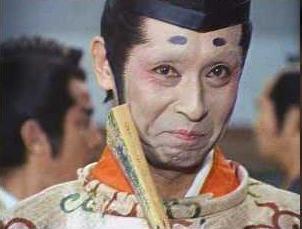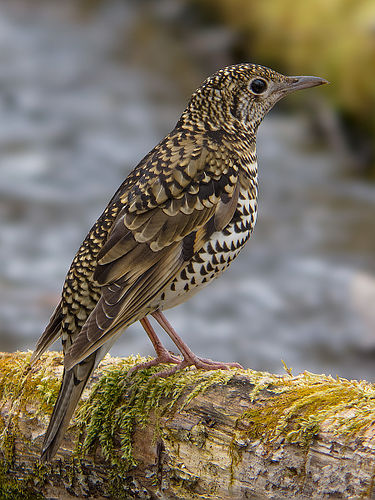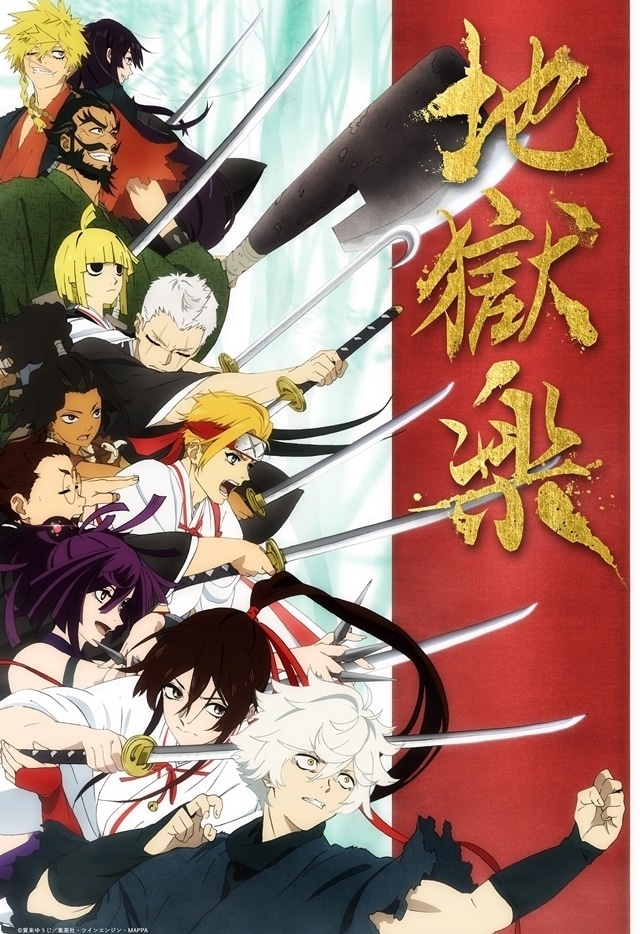The main character of the anime “Hell’s Paradise” is Gabimaru.
Gabimaru is a character who is portrayed as a killing machine and a ninja raised in the setting of the Iga ninja village “Iwagakure Shu”, known as the leader and strongest character.
This time, I researched the origin of the name Gabimaru and would like to discuss the results.
Furthermore, I will also introduce Gabimaru’s real name, which has not been revealed in the story.
Gabimaru, the main character of “Hell’s Paradise”
In the anime “Jigokuraku”, the protagonist is named Gabimaru.
When I think about why he was given such a name, it seems very mysterious.
He is also called “Garan no Gabimaru” as a nickname, and it has a nice ring to it with the rhymes.
However, when I think about it a little more, I wonder what “Garan” or “Gabimaru” actually mean.
A setting named Gabimaru
The name “Gabimaru” in “Jigokuraku” is said to be the title given to the leader of the ninja group “Iwagakure no Shu”.
It is said that many of those who were trained from childhood to become the strongest ninja perished due to the harshness of their training.
As the pinnacle of these ninjas, who were trained to be killing machines without any affection, only one ninja can inherit the name “Gabimaru.”
The inheritance ceremony itself is said to be brutal, involving a duel with the previous Gabimaru to determine the successor and eliminate the current holder.
While this method of inheritance is certainly harsh and reflects the severity of the ninja’s training, it raises the question of what would happen if the current Gabimaru were to die in the line of duty.
I am curious to know what succession method would be followed in such a case.
“Garan” means “Garando”
The term “Garan” in the context of “Gabimaru” is introduced in the story and it is derived from the word “Garandou” which means “empty” or “void.”
Those who take on the name “Gabimaru” are expected to empty their hearts and carry out their assigned missions, which often involve killing their targets without any hesitation or emotional attachment.
They are able to eliminate obstacles or enemies without any hesitation or remorse, reflecting the empty or void-like state of mind they are supposed to possess as “Garandou no Gabimaru.”
Interestingly, the origin of the term “Garandou” is said to come from the “Garandou” or “Garan-dou” which is a hall where Buddhist deities are enshrined.
It was originally used to describe a spacious room like a “Garandou” hall, and over time, it came to be used in the context of an empty or void-like state of mind as well.
Why “Gabimaru”? consider the origin
By the way, why did Ishigakure call the head ninja by the name of “Gabimaru”?
I did some research on it.
What is “Gabi” meaning?
“Gabimaru”
literally translates to “Eyebrow-Painting Circle” in English.
As the name suggests, “Gabimaru” refers to the act of painting one’s eyebrows.
In fact, “Gabi” is listed as a word in Japanese dictionary.
However, what does painting eyebrows have to do with ninjas?
When it comes to Japanese history, the first thing that comes to mind when talking about “painting eyebrows” is the nobles.

They would paint their faces white, shape their eyebrows into round arcs, and apply black paint to their teeth, creating a distinctive look.
However, “Gabimaru” in “Hell’s Paradise” refers to a ninja, not a noble.
I have never heard of a tradition of ninjas painting their faces, so why is it called “Gabimaru”?
It means White’s thrush in Chinese
When researching about “Gabi”, I found out that it refers to a bird called “White’s Thrush” in Chinese.
White’s Thrushes are commonly found in Japan, breeding in the low mountains of Honshu, Shikoku, and Kyushu, in sub-alpine regions.
They are about 30 cm in length, similar to the size of a blackbird. The head, back, and wings are covered in yellow-brown feathers with dense black speckles. The underparts are whitish, with a black beak and flesh-colored legs. There is no difference in appearance between males and females.

The most famous characteristic of the White’s thrush is its song. It sings “Hii, Hii” or “Hyo, Hyo” and makes a sharp “Gah” call, mainly at night, which is its biggest feature. It may also sing during the day in rainy or cloudy weather.
Due to its habit of singing at night, the White’s thrush has been associated with fear or uneasiness among people. It has been called “Nue” or “Nue-dori” in Japanese, which means a bird that cries at night in the forest. This image has been used as a season word (kigo) for sad words in Japanese poetry.
Furthermore, the “Nue” is a legendary monster in Japanese folklore, which has the face of a monkey, the body of a tanuki (raccoon dog), and the limbs of a tiger, with a snake for a tail. It has been feared and revered in stories such as “Heike Monogatari” (The Tale of the Heike).
In Hell’s Paradise, the character “Gabimaru” has the ability to manipulate fire, not lightning or electricity, and the Five Elements (fire, water, wood, metal, earth) are the only types of ki (energy) depicted in the story, with no mention of lightning.
Therefore, it may be a stretch to directly associate “Gabimaru” with lightning just because the White’s Thrush, which is associated with lightning in Japanese folklore, is called “Gabi” in Chinese.
Gabimaru’s real name is Saku
In the work “Hall’s Paradise,” the character known as “Gabimaru” is only referred to as “Gabimaru.”
However, this name “Gabimaru” is actually a code name, and it is believed that he has a real name when he is not using this code name, as only the leader of the Iwagakure ninja can use the name “Gabimaru.”
However, his real name does not appear in the story.
But in the official fan book “Jigokuraku Kaitai Shinsho,” which was released simultaneously with the final volume of the (comic book) on April 30, 2021 in Japan, it was introduced that his real name is “Saku” in a newly drawn manga.
The fan book contains backstories of characters that were not revealed in the main story of “Jigokuraku,” two one-shots from the special edition of Weekly Shonen Jump, bonus manga, and Q&A with the author, Kaku Yuuji.
From the manga in the fan book where “Gabimaru” is referred to as “Saku,” it is speculated that “Saku” might be his real name.
Explanation of the meaning of “saku(朔)”
The kanji “朔” is a rare and special character that is not commonly seen in Japanese.
Upon further investigation, it has three readings:
On’yomi (Chinese reading): “saku”
Kun’yomi (Japanese native reading): “Tsui tachi (First day)”, “kita (North)”
When researching, it was found that the word “saku” originally had a meaning related to the celestial longitude of the moon and the sun being equal, and it referred to the time of that occurrence.
In modern usage, it is synonymous with “new moon” or “shingetsu” in Japanese.
In the traditional Chinese lunar calendar still used in China today, the new moon represents the beginning of the month. As a result, the day of the new moon, which is the first day of the month, came to be read as “ついたち” in Japanese.
Additionally, because the first animal in the Chinese zodiac, the Rat, represents the North direction, “朔” also came to be read as “kita” meaning “North” as a Kun’yomi reading.
Consideration of the reason for the name Saku
It is possible that the reason for having the given name “Saku (朔)” is related to the wife’s name “Yui (結)” (which means “end” or “conclusion” in Japanese), creating a contrast between the beginning and the end.
Her name is introduced later story by Gabimaru.
As a contrasting pair, “朔” (which represents the beginning or new moon) may have been chosen in relation to “結” (which represents the end or conclusion) for the purpose of creating a meaningful name.
summary
I have considered the possible origins of the name “Gabimaru,” the main character in the anime “Hell’s Paradise.”
In the story, “Gabimaru” is the title given to the leader of the ninja group “Iwagakure Shu,” who is known for carrying out assassination missions without showing any emotions, hence earning the nickname “garan” meaning “empty” or “hollow.”
While the explanation for this title is provided in the story, there is no explanation for why the name “Gabi” was chosen. However, upon further research, it was found that “Gabi” refers to a bird called “Japanese bush warbler” in Chinese.
In Japan, the Japanese bush warbler is not considered a revered bird and is associated with the yokai creature “Nue” due to its nocturnal cries. Nue is also believed to be a thunder beast in some legends, and taking these elements into consideration, it is possible that the title “Gabimaru” was chosen.
Furthermore, the real name of “Gabimaru” is revealed to be “Saku” in the official fanbook, which means “new moon” and is often associated with “beginning” or “first.” Considering that the name of his wife, whom he desperately wishes to reunite with, is “Yui” meaning “end” or “together,” it seems that the names of the couple are ingeniously contrasted to represent the beginning and the end, adding depth to their story.


コメント